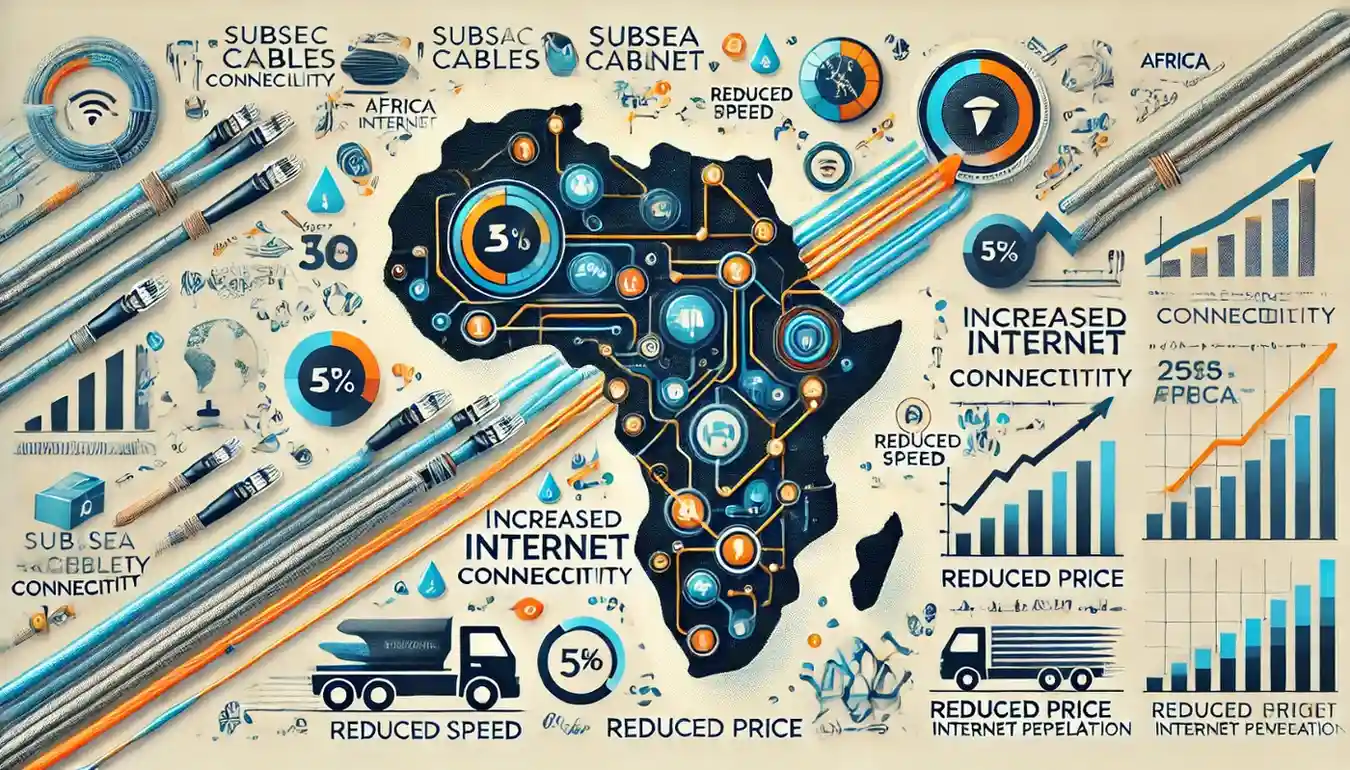Africa Finance Corporation (AFC) has released its ‘State of Africa’s Infrastructure 2024’ report, emphasizing the crucial role of subsea cables in enhancing connectivity, accelerating internet speeds, and lowering internet prices across the continent.
According to the report, the recently landed Equinao cable is projected to boost internet speeds in Nigeria by five times by 2025, and three times in South Africa and Namibia. By that same year, internet prices in these countries are expected to decrease by 16% to 21%, leading to a 7% increase in internet penetration in Nigeria and South Africa, and a 9% rise in Namibia.
The report indicates that Africa’s internet bandwidth growth from 2019 to 2023 surpassed that of Asia and Latin America, achieving 44% compared to 32% and 31%, respectively. By the end of 2022, Africa’s total inbound international bandwidth reached 36.7 Terabits per second (Tbps), with 12.9 Tbps allocated to North Africa and 23.8 Tbps to sub-Saharan Africa, where South Africa, Kenya, and Nigeria accounted for two-thirds of the total volume.
Despite the potential, AFC states that the total design capacity of 33 submarine cables linked to sub-Saharan Africa could exceed 800 Tbps; however, less than 24 Tbps was utilized by the region at the end of 2022. The report stresses the need for greater diversity in cable routes and ownership to enhance the effectiveness and resilience of Africa’s first-mile infrastructure, particularly as older subsea cables approach the end of their operational lifespan. Currently, most coastal nations possess only one landing station, and few cables extend to South Africa, limiting direct connectivity across the continent.
While significant strides have been made in bringing millions of Africans online, the report notes that middle-mile and last-mile infrastructure remains inadequate, and regional networks are still lacking in many areas. This limited infrastructure contributes to high connectivity costs, which often exclude many Africans from accessing digital services.
Africa’s population is projected to grow to 2.4 billion by 2050, up from 1.4 billion today, with a substantial number of young people gravitating towards rapidly growing cities such as Lagos and Dar es Salaam. Despite the continent’s digital infrastructure being recognized as a success story for attracting global investment and private sector participation, the AFC highlights that it still lags behind in middle-mile and last-mile connectivity.
The report reveals that approximately 60% of Africans lack internet access, with insufficient fiber infrastructure hindering the distribution of quality bandwidth locally. Furthermore, high digital service costs remain a significant barrier to wider adoption, leaving millions unable to access essential services.
As of now, all African coastal nations, with the exception of Eritrea, have at least one subsea cable landing.















